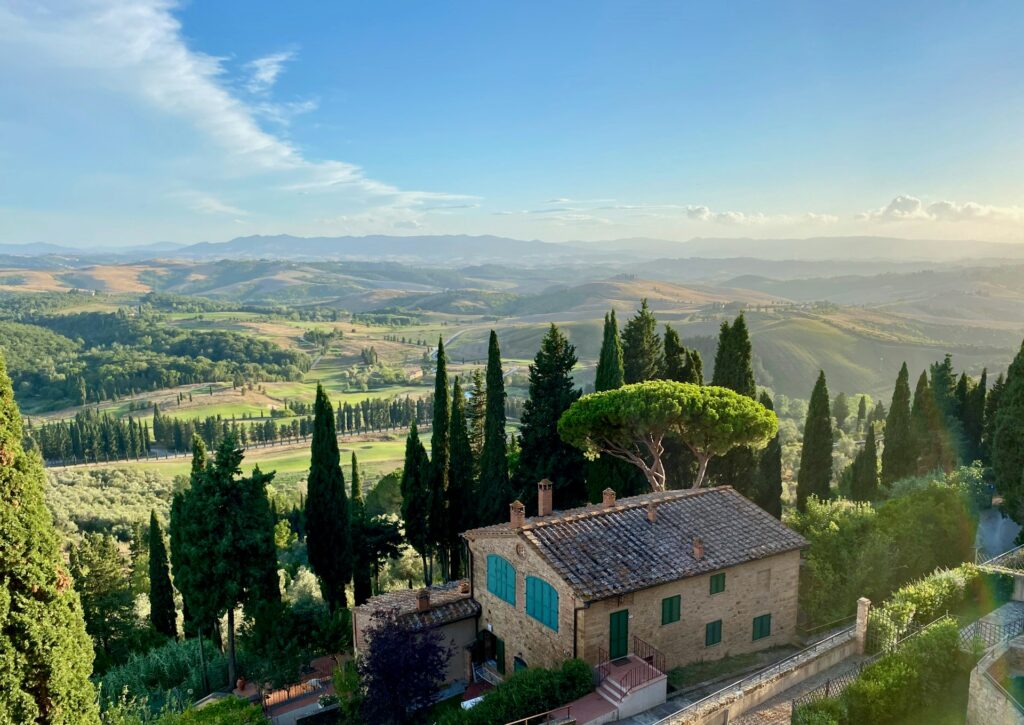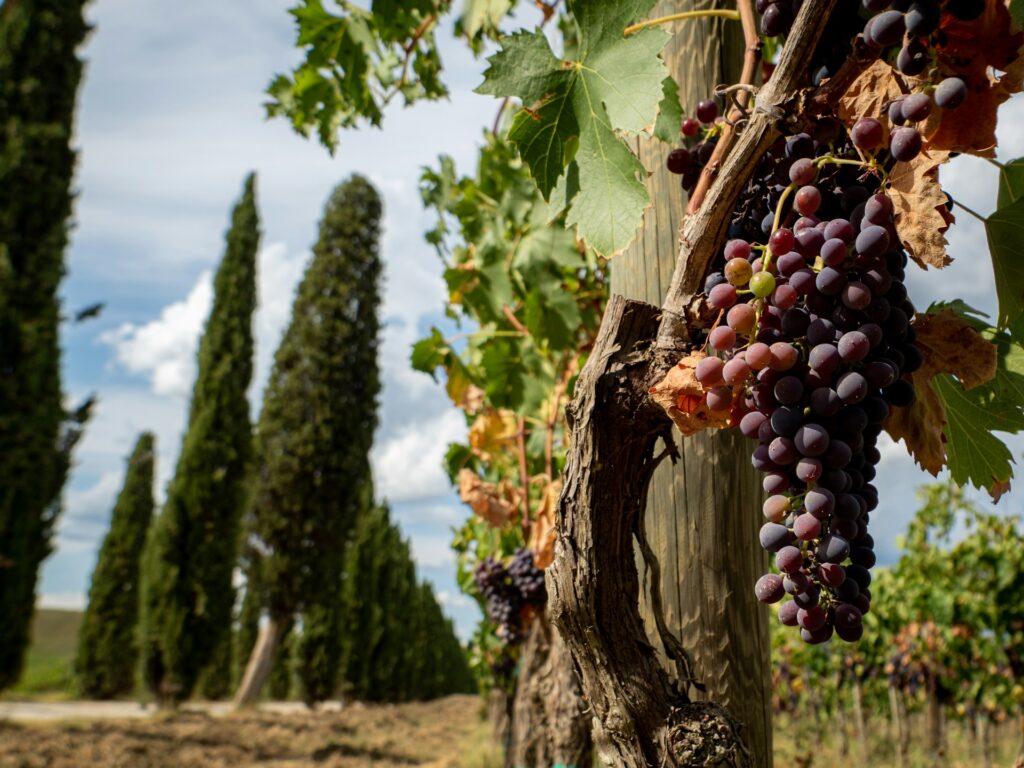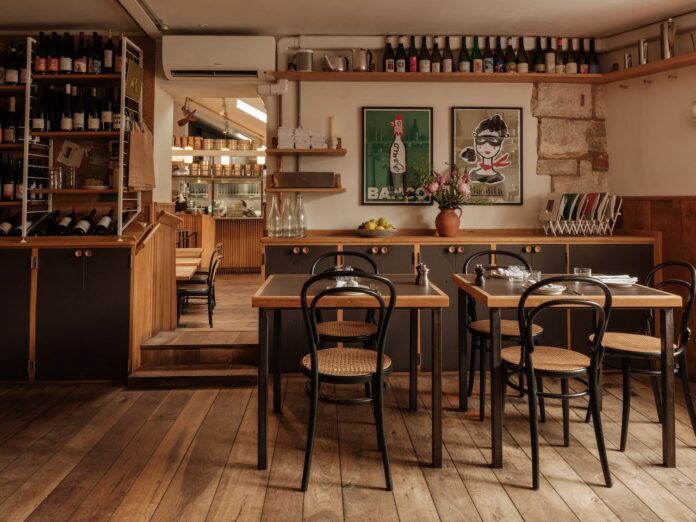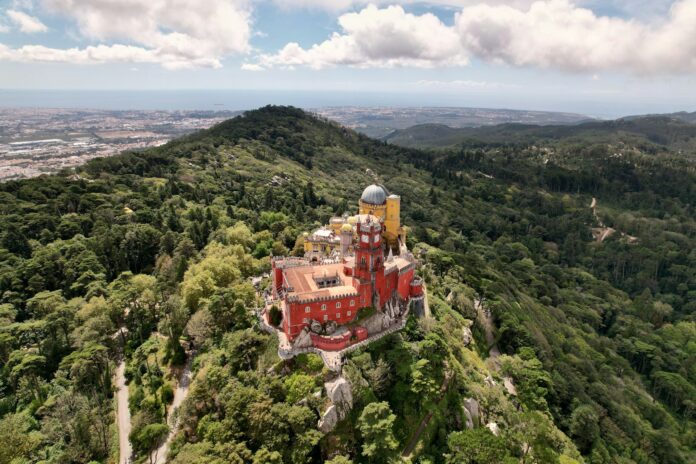For holidaymakers who love to base their adventures around food and wine, Italy is one of the world’s most sought-after destinations. While the basic staples, such as the ubiquitous, ever delicious pizza and pasta can be found throughout the country, every province has its own proudly regional dishes and specialities that have been passed down through generations.
Tuscany is no exception, and has a unique, exceptional cuisine all of its own. The region’s fertile landscape gives rise to an abundance of fresh produce and, of course, the grapes used in its renowned wines. While not quite as simplistic as the cucina povera of the southern Italian region of Puglia, Tuscan food is good, honest fare, allowing the quality of the earthy produce and ubiquitous olive oil to shine through.
Should you be visiting the region and are keen to delve deeper into the cuisine, then you’ve come to the right place; here’s how to eat like a local in Tuscany.
Sharing Tasters & Small Plates To Start
Long before ‘small plates’ graced the tables of every hip city in Europe, the restaurants and family homes of Tuscany were enjoying the art of sharing a few nibbles.
For the Tuscans (and all Italians), every meal is an event, and every event tends to start with the very sociable sharing platter. Sharing is a wonderful way to loosen up the mood and can be an endless source of inspiration for conversation, not to mention the fact that the bread and fresh vegetable led culture of Tuscany lends itself perfectly to sharing.
For foodie travellers, this type of spread offers a great chance to sample some as much of the Tuscan cuisine as possible early on. We love the ever popular (and extremely more-ish) lardo di colonnata; pork lard cured in marble and usually served alongside the crusty bread known as crostini. Another delicious starter is crostini toscani, which is bread topped with a creamy chicken liver pâté.
Yep, these guys take great pride in their bread and pane Toscano is a very particular loaf; round and unsalted, then wood fired, it’s designed to be an apt focal point to a rich pâté or simply to allow a drizzle of the region’s famous olive oil to properly shine. Bringing all of these elements together, bruschetta is a popular antipasto here.
Beyond these classics, you’ll find affettati misti gracing most tables – a carefully curated selection of local cured meats including finocchiona (fennel-scented salami), soprassata, and the prized prosciutto Toscano DOP. These are often paired with pecorino cheese from nearby Pienza, creating a perfect harmony of salty, savoury flavours.
Don’t miss the pinzimonio either – raw seasonal vegetables served with a simple dipping sauce of the finest extra virgin olive oil, salt, and pepper. It’s a testament to the Tuscan philosophy that when ingredients are of exceptional quality, minimal intervention yields the best results. Many locals will tell you that the true test of a restaurant’s worth lies in the quality of its olive oil, and this simple starter puts it centre stage.

Primi – First Courses
Italian primi are quite often a modest serving of pasta, but in Tuscany there are some hearty traditional dishes as an alternative. Ribollita is one of the most famous: a rustic, thick soup consisting of seasonal, fibrous vegetables, cannellini beans and torn chunks of white bread. Panzanella is a lighter, summery primi, made from fresh tomatoes, onion, basil, balsamic soaked bread and tossed in the best quality olive oil.
But that’s not to say the pasta dishes aren’t pretty special, too. Our favourite is tortelli di patate; pasta parcels filled with a potato and parmesan mixture and often topped with a rich ragù of game meat, which incidentally, is so popular in the region.
The primi course truly showcases Tuscany’s resourceful culinary heritage, with many dishes originating from the need to use day-old bread creatively. Pappa al pomodoro, a thick tomato and bread soup perfumed with basil and garlic, exemplifies this perfectly – it’s comfort food at its finest. For pasta lovers, pici deserves special mention; these hand-rolled, irregular strands of pasta are unique to southern Tuscany and are typically served all’aglione (with a garlicky tomato sauce) or with breadcrumbs, a humble yet satisfying combination.
In autumn, you might encounter tortelli maremmani, delicate pasta pillows filled with ricotta and spinach, dressed simply with butter and sage. The Tuscans also have a particular fondness for farro, an ancient grain that appears in soups like minestra di farro, often enriched with borlotti beans and finished with a generous glug of new season olive oil.

Secondi – Main Courses
Secondi are where things get serious (so you’re advised to leave plenty of room after your primi) and usually consist of some kind of a meat dish. Wild boar is a true Tuscan speciality; cinghiale in umido is a deliciously rich wild boar stew with a strong flavour and melt-in-your-mouth texture.
The reputation of the traditional bistecca alla Fiorentina often precedes it – many say you haven’t eaten the true taste of Tuscany if you don’t face down this huge slab of premium beef. The dish consists of a huge steak, served rare and on the bone with roast potatoes and beans. The steaks are often in excess of three to four pounds so it’s a good sharing dish. Or, if you’ve a particularly voracious appetite, maybe not…
The Chianina cattle that provide the meat for authentic bistecca alla Fiorentina are an ancient Tuscan breed, and their beef is prized for its distinctive flavour and tender texture. Beyond the famous steak, secondi in Tuscany embrace the full spectrum of local proteins. Peposo, a peppery beef stew traditionally cooked by terracotta tile workers in wine bottles placed in kilns, represents the ingenious cooking methods of working-class Tuscany.
For something lighter, try the tagliata – sliced beef served over rocket with shavings of parmesan and a drizzle of aged balsamic. Pollo al mattone (chicken cooked under a brick) yields incredibly crispy skin and succulent meat, whilst trippa alla Fiorentina (tripe in tomato sauce) remains a beloved dish amongst locals, though it may challenge more timid palates. Near the coast, you’ll find cacciucco, a robust fish stew from Livorno that rivals any bouillabaisse, laden with the day’s catch and served over garlic-rubbed bread.
Read: Where savvy Brits are buying in Italy in 2025

Desserts
You know that strange human appetite trait that always leaves a little room for dessert? After all the amazing food that’s served up as primi and secondi, in Tuscany you’ll only need to save a small space, because the traditional way to finish is surprisingly light.
Indeed, meals in the region are quite often simply capped off with some cantucci (crisp almond biscuits similar to biscotti) dipped in a glass of smooth, sweet vin santo. Of course, if there is still a space wanting to be filled, you could try a slice of castagnaccio, a traditional local cake made with chestnut flour. Both delicious and a beautiful way to cap off a true Tuscan feast.
The Tuscan approach to dolci reflects the region’s preference for subtlety over extravagance. Schiacciata alla Fiorentina, a light sponge cake dusted with icing sugar and bearing the Florentine lily emblem, appears during Carnival season and provides a delicate sweetness without overwhelming the palate. In Siena, you’ll encounter panforte, a dense, chewy confection studded with nuts, dried fruit, and spices that dates back to medieval times – it’s particularly magical paired with a robust espresso.
Ricciarelli, soft almond cookies from the same city, melt on the tongue with their delicate sweetness. During autumn, look for necci – thin chestnut flour crêpes filled with fresh ricotta – and in summer, don’t miss the opportunity to try a proper gelato from one of the region’s acclaimed gelaterie. The Tuscans understand that the best ending to a meal shouldn’t mask what came before, but rather provide a gentle, satisfying conclusion to the symphony of flavours.

The Wine & Drinks Experience
No discussion of Tuscan dining would be complete without proper attention to the region’s liquid treasures. Tuscany’s rolling hills produce some of Italy’s most celebrated wines, and understanding local drinking customs enhances any meal immeasurably. The evening often begins with an aperitivo – perhaps a Negroni (invented in Florence in 1919) or a simple Aperol Spritz – accompanied by small snacks. During the meal, wine selection follows careful consideration: a crisp Vernaccia di San Gimignano with seafood or lighter primi, graduating to the region’s famous reds with heartier fare.
Chianti Classico, with its distinctive black rooster seal, remains the workhorse wine of Tuscan tables, but venture beyond to discover Brunello di Montalcino, one of Italy’s most prestigious wines, or Vino Nobile di Montepulciano, elegant and food-friendly. The so-called ‘Super Tuscans’ – modern wines that break traditional rules by incorporating international grape varieties – offer a contemporary take on Tuscan winemaking. Wine and food tours in Tuscany provide an immersive way to explore these varied wine regions, often including visits to historic cellars and paired tastings with local specialities. Don’t overlook the humble house wine (vino della casa) in local trattorias; it’s often a perfectly serviceable local blend that pairs beautifully with rustic fare.
After dinner, beyond the traditional vin santo, you might be offered grappa or limoncello as a digestivo. Coffee culture here is precise: cappuccino is strictly a breakfast drink, whilst espresso is the only acceptable coffee after a meal. Understanding these rhythms and rituals transforms dining from mere sustenance into a cultural immersion, allowing you to truly eat – and drink – like a Tuscan local.





